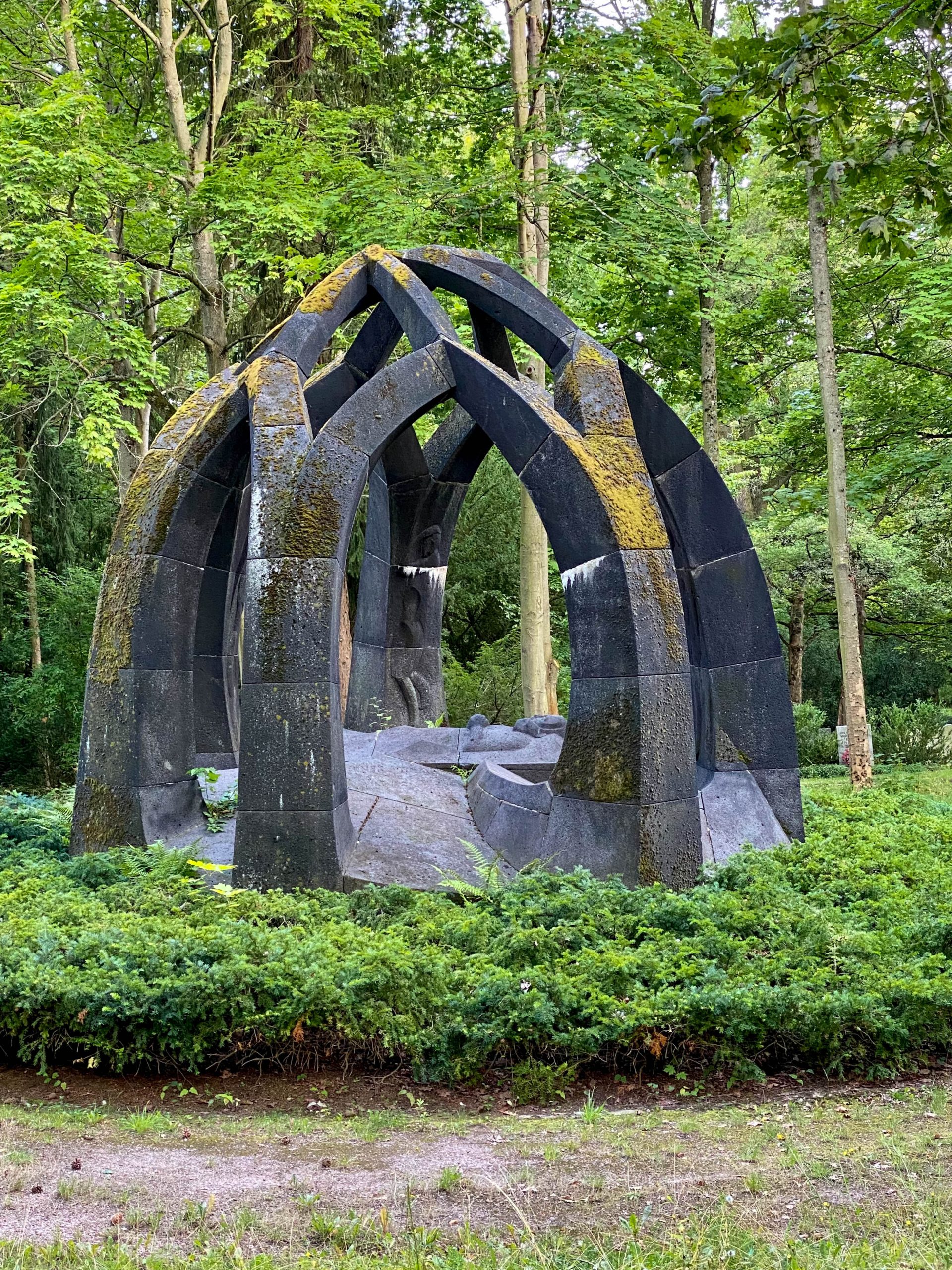
Tomb Carl Schmidt, 1920-1921. Design: Hans Walther. Photo: Daniela Christmann
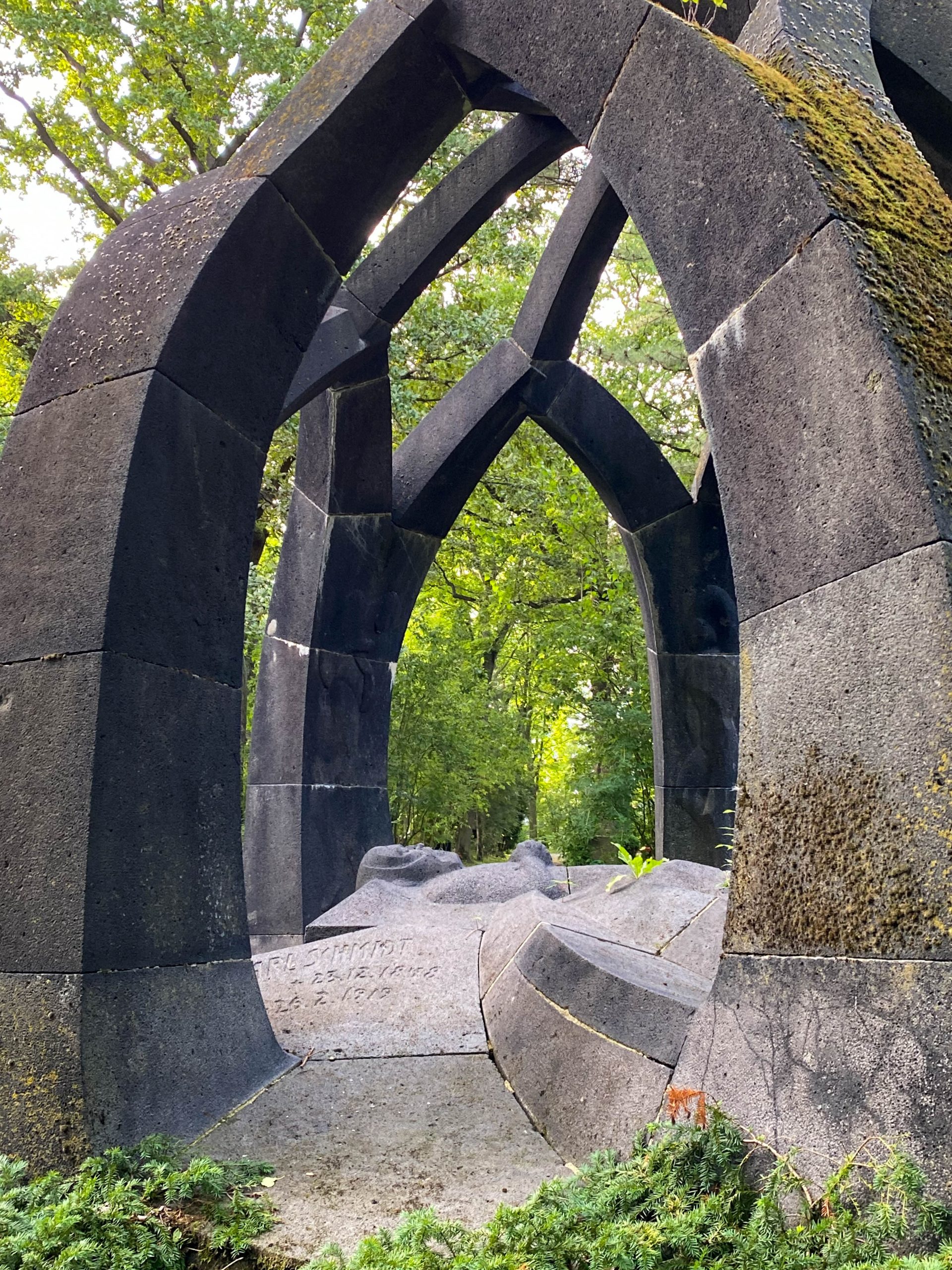
Tomb Carl Schmidt, 1920-1921. Design: Hans Walther. Photo: Daniela Christmann
1920 – 1921
Design: Hans Walther
Main Cemetery, Binderslebener Landstraße 75, Erfurt, Germany
The tomb for the family of the flower breeder and gardener Carl Schmidt in the main cemetery in Erfurt was built between 1920 and 1921 to a design by Hans Walther.
Haage & Schmidt
The Erfurt commercial horticultural firm Haage & Schmidt was already one of the largest nurseries in Europe in the 19th century.
In 1898 Carl Schmidt (1848-1919), who came from Schleusingen, Thuringia, had taken over the business as sole owner and managed and expanded the company with great success until the outbreak of the First World War.
He died on February 26, 1919, shortly after his seventieth birthday. Two years later, his son Curt (1882-1921) also died at the age of only thirty-eight.
Tomb
The tomb for father and son consists of seven branching pillars of basalt lava facing each other.
Beneath this implied dome, a stylized figure made of stone lies inside, on diagonally stacked slabs.
The design of the tomb is similar to the Wissinger hereditary tomb of Max Taut and Rudolf Belling at the Südwestkirchhof Stahnsdorf near Berlin, which was completed one year later.
Hans Walther
The sculptor Hans Walther was the son of the stonemason Carl Walther from Apolda, who produced funerary monuments. After the family moved to Erfurt in 1896, his father set up a new workshop there, which flourished and soon enabled him to build his own house.
After attending high school, Hans began studying with Adolf Brütt at the Grand Ducal School of Art in Weimar in 1908. Soon after, he moved to Berlin, where he continued to study with Hugo Lederer.
During a study visit to Paris, he met Auguste Rodin. At the suggestion of Max Klinger, he was accepted into the Deutscher Künstlerbund in 1910.
Berlin
In Berlin, Walther came into contact with leading Expressionist painters such as Christian Rohlfs, Max Pechstein, Paul Klee and Lyonel Feininger, as well as the architects Hans Scharoun and the Taut brothers.
His traumatic experiences as a soldier in World War I shaped his world view and his conception of art.
During the Nazi era, many of his grave monuments in Erfurt’s main cemetery were removed or mutilated as so-called degenerate art.
In contrast, stones in crystalline, expressionist forms were spared – including five monuments in the New Jewish Cemetery alone, as well as the tombstone shown here.
In 1930, Hans Walther designed the figures on the portal of the savings bank on the Anger in Erfurt, and in 1935 the front of the new savings bank on the Fischmarkt.
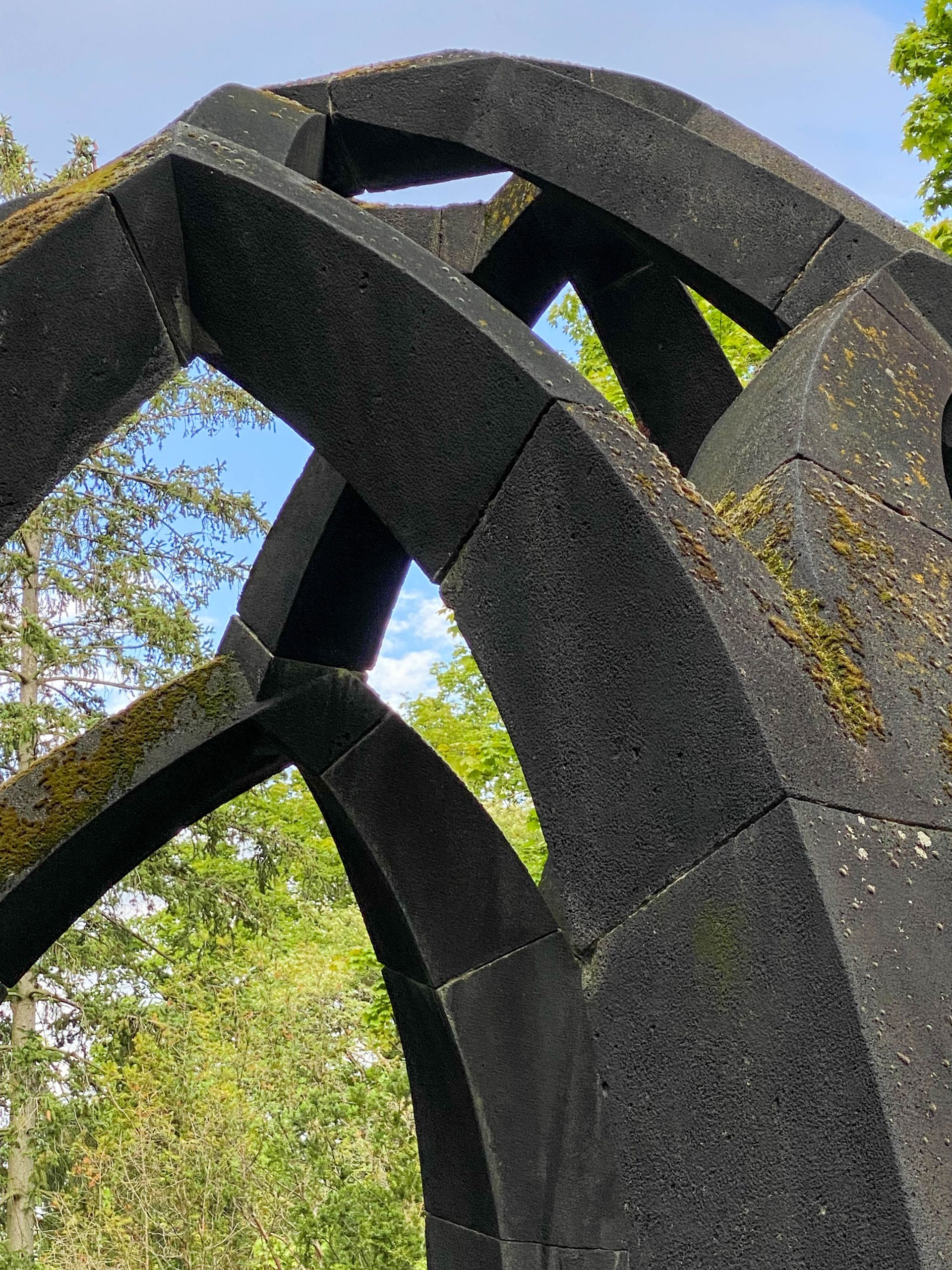
Tomb Carl Schmidt, 1920-1921. Design: Hans Walther. Photo: Daniela Christmann
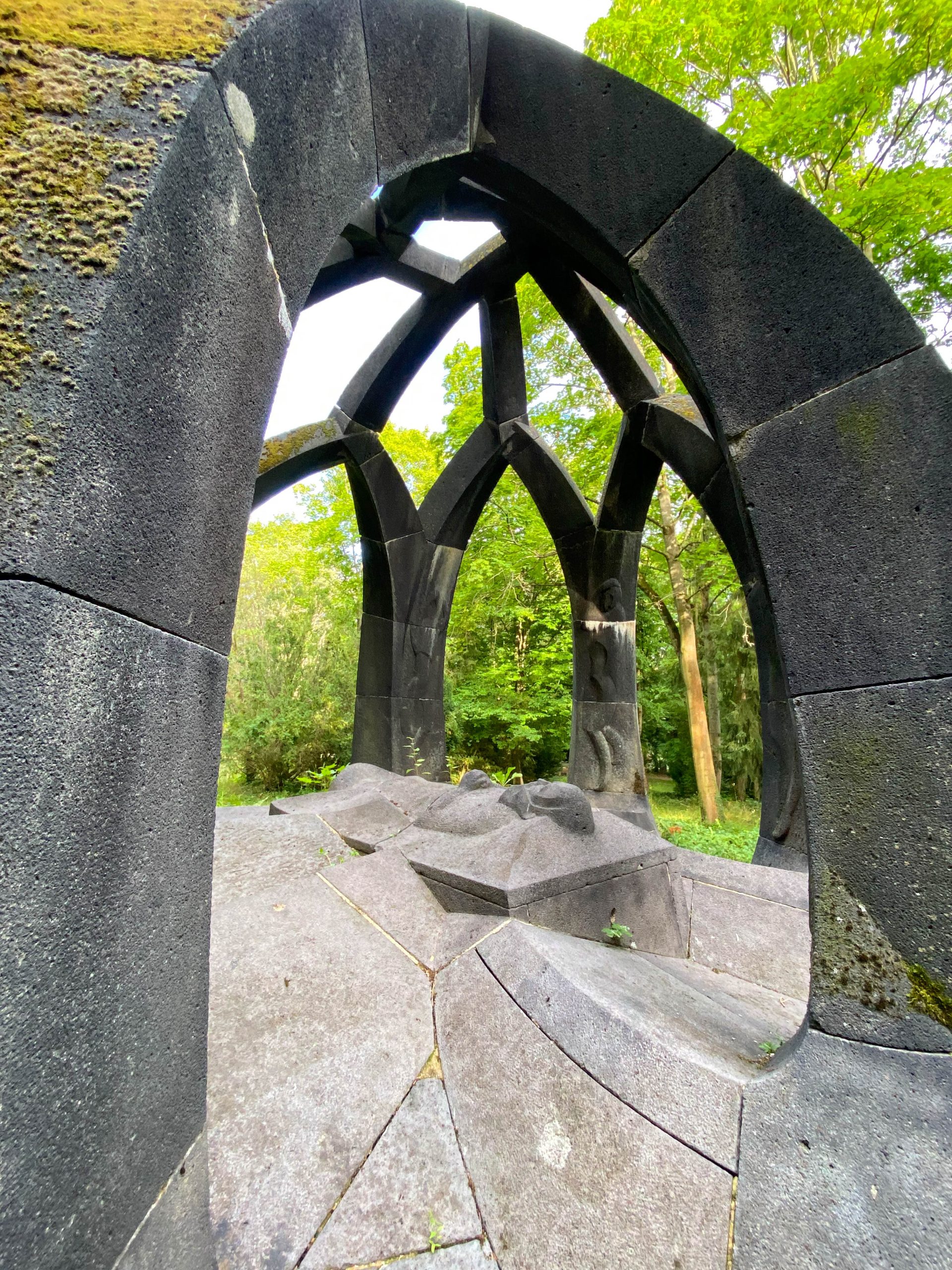
Tomb Carl Schmidt, 1920-1921. Design: Hans Walther. Photo: Daniela Christmann
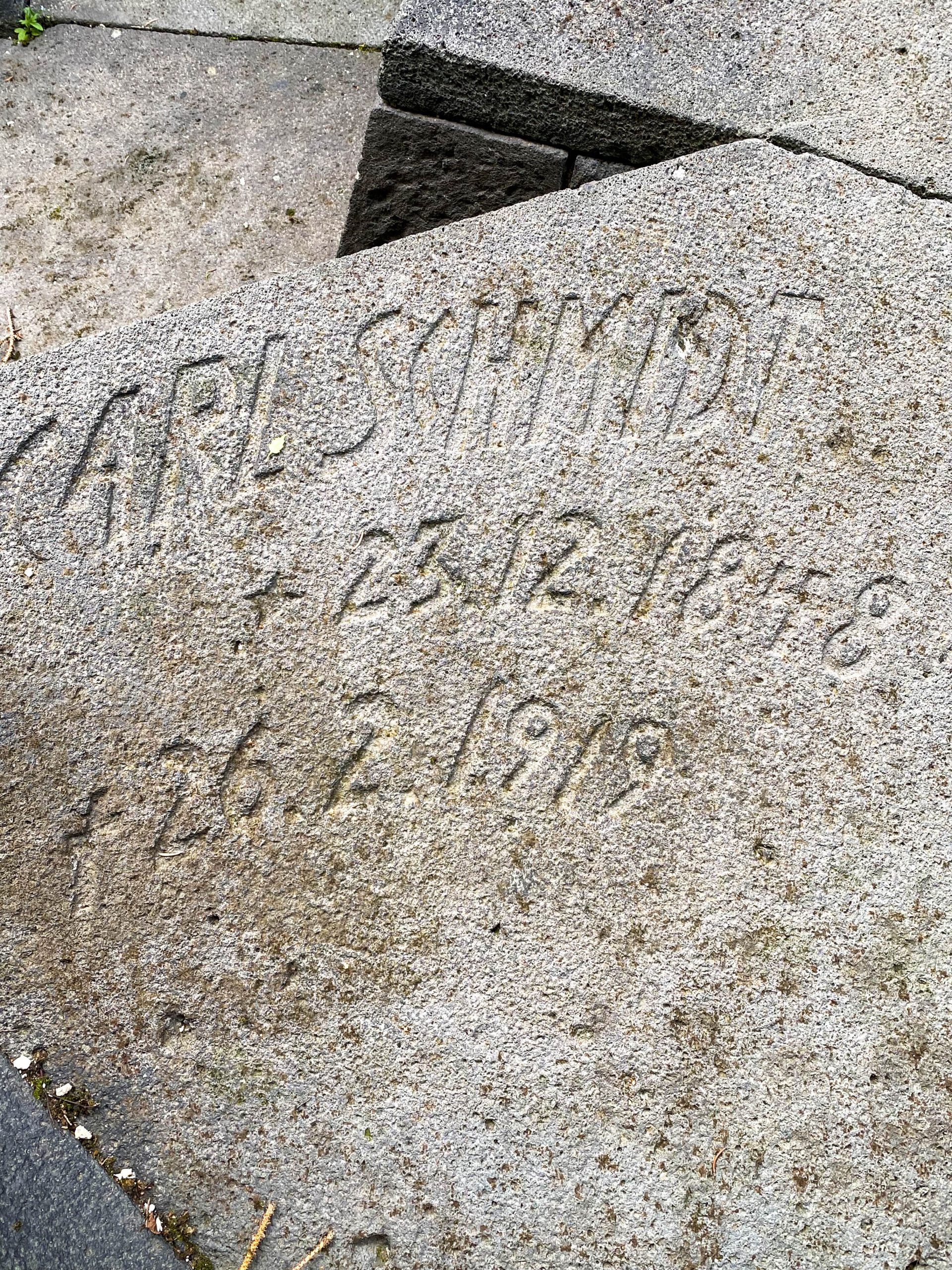
Tomb Carl Schmidt, 1920-1921. Design: Hans Walther. Photo: Daniela Christmann
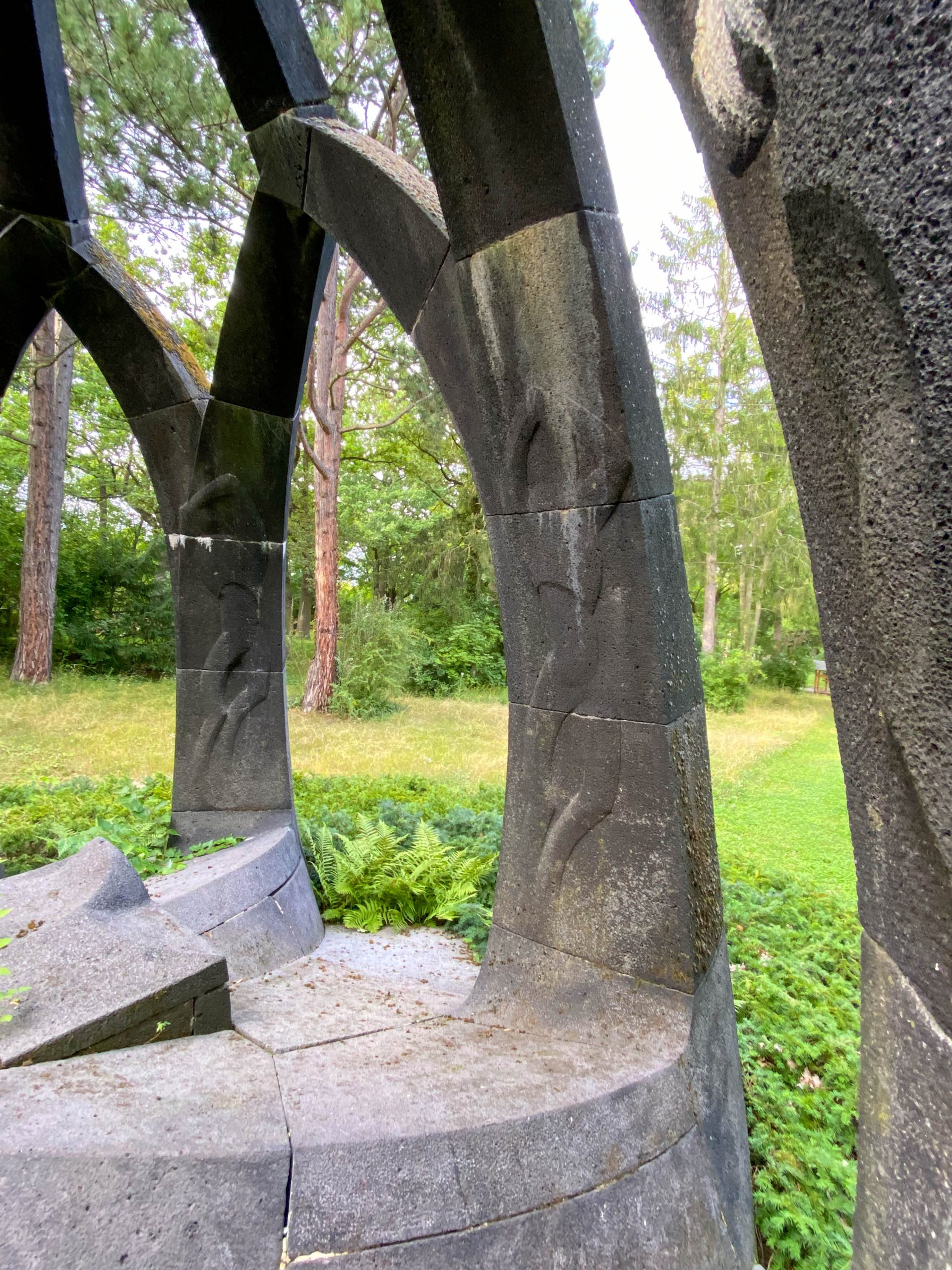
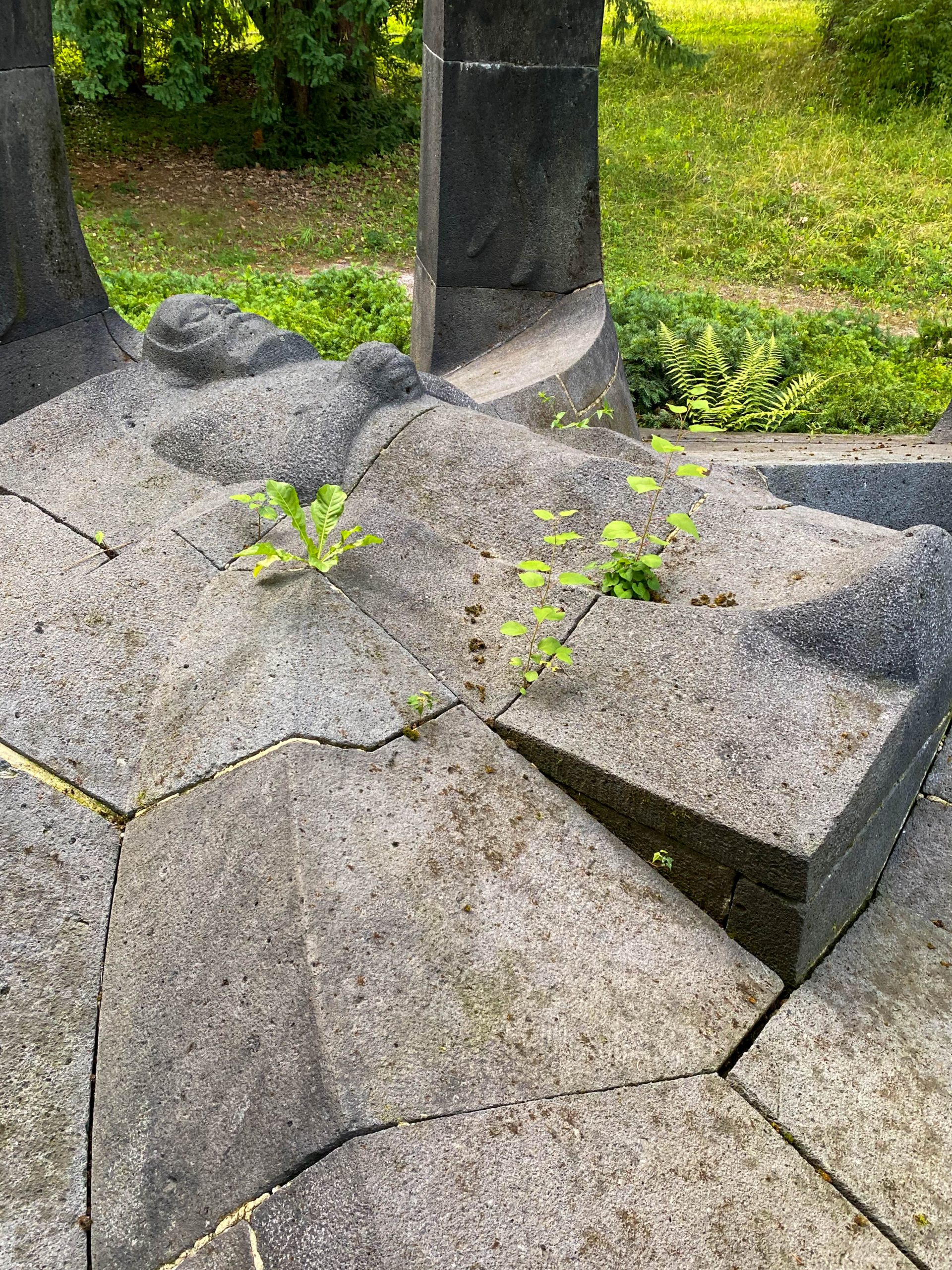

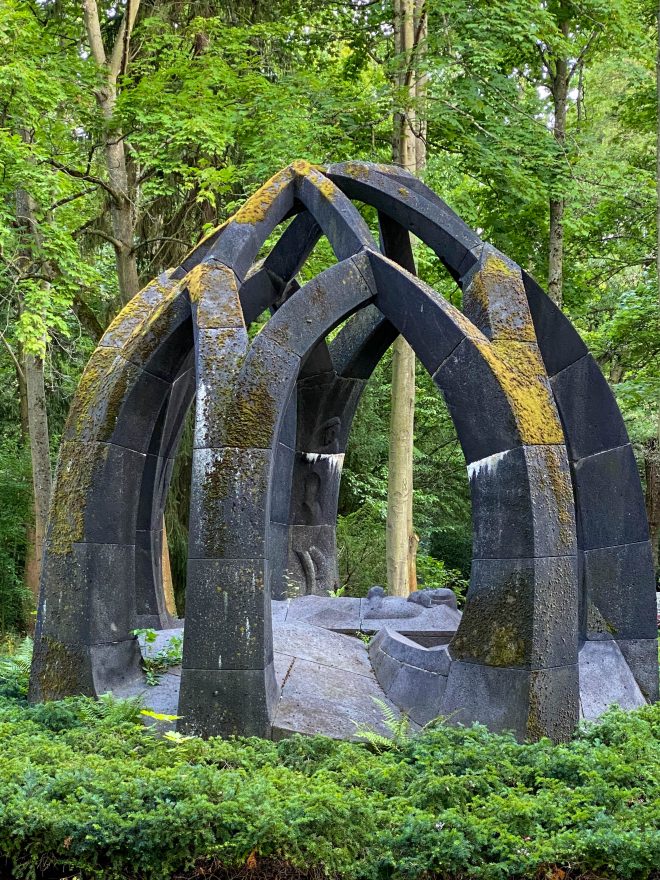 Grabmal Carl Schmidt, 1920-1921. Entwurf: Hans Walther. Foto: Daniela Christmann
Grabmal Carl Schmidt, 1920-1921. Entwurf: Hans Walther. Foto: Daniela Christmann